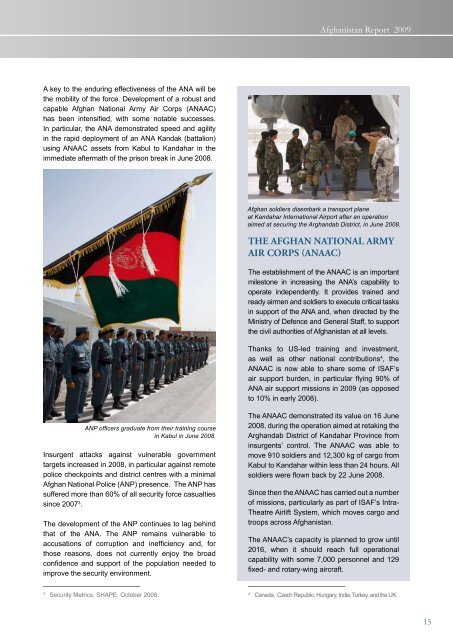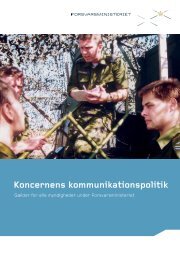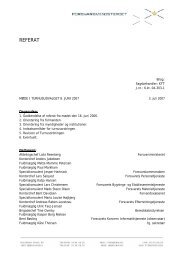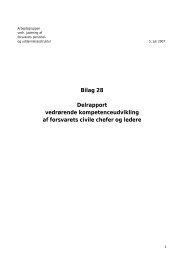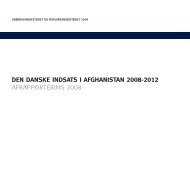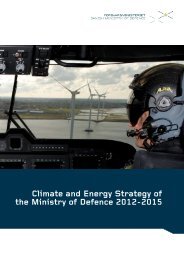Afghanistan Report 2009 - Isaf - Nato
Afghanistan Report 2009 - Isaf - Nato
Afghanistan Report 2009 - Isaf - Nato
You also want an ePaper? Increase the reach of your titles
YUMPU automatically turns print PDFs into web optimized ePapers that Google loves.
<strong>Afghanistan</strong> <strong>Report</strong> <strong>2009</strong><br />
A key to the enduring effectiveness of the ANA will be<br />
the mobility of the force. Development of a robust and<br />
capable Afghan National Army Air Corps (ANAAC)<br />
has been intensified, with some notable successes.<br />
In particular, the ANA demonstrated speed and agility<br />
in the rapid deployment of an ANA Kandak (battalion)<br />
using ANAAC assets from Kabul to Kandahar in the<br />
immediate aftermath of the prison break in June 2008.<br />
Afghan soldiers disembark a transport plane<br />
at Kandahar International Airport after an operation<br />
aimed at securing the Arghandab District, in June 2008.<br />
The Afghan National Army<br />
Air Corps (ANAAC)<br />
The establishment of the ANAAC is an important<br />
milestone in increasing the ANA’s capability to<br />
operate independently. It provides trained and<br />
ready airmen and soldiers to execute critical tasks<br />
in support of the ANA and, when directed by the<br />
Ministry of Defence and General Staff, to support<br />
the civil authorities of <strong>Afghanistan</strong> at all levels.<br />
Thanks to US-led training and investment,<br />
as well as other national contributions 4 , the<br />
ANAAC is now able to share some of ISAF’s<br />
air support burden, in particular flying 90% of<br />
ANA air support missions in <strong>2009</strong> (as opposed<br />
to 10% in early 2008).<br />
ANP officers graduate from their training course<br />
in Kabul in June 2008.<br />
Insurgent attacks against vulnerable government<br />
targets increased in 2008, in particular against remote<br />
police checkpoints and district centres with a minimal<br />
Afghan National Police (ANP) presence. The ANP has<br />
suffered more than 60% of all security force casualties<br />
since 2007 3 .<br />
The development of the ANP continues to lag behind<br />
that of the ANA. The ANP remains vulnerable to<br />
accusations of corruption and inefficiency and, for<br />
those reasons, does not currently enjoy the broad<br />
confidence and support of the population needed to<br />
improve the security environment.<br />
The ANAAC demonstrated its value on 16 June<br />
2008, during the operation aimed at retaking the<br />
Arghandab District of Kandahar Province from<br />
insurgents’ control. The ANAAC was able to<br />
move 910 soldiers and 12,300 kg of cargo from<br />
Kabul to Kandahar within less than 24 hours. All<br />
soldiers were flown back by 22 June 2008.<br />
Since then the ANAAC has carried out a number<br />
of missions, particularly as part of ISAF’s Intra-<br />
Theatre Airlift System, which moves cargo and<br />
troops across <strong>Afghanistan</strong>.<br />
The ANAAC’s capacity is planned to grow until<br />
2016, when it should reach full operational<br />
capability with some 7,000 personnel and 129<br />
fixed- and rotary-wing aircraft.<br />
3<br />
Security Metrics, SHAPE, October 2008.<br />
4<br />
Canada, Czech Republic, Hungary, India, Turkey, and the UK.<br />
15


